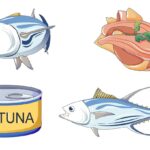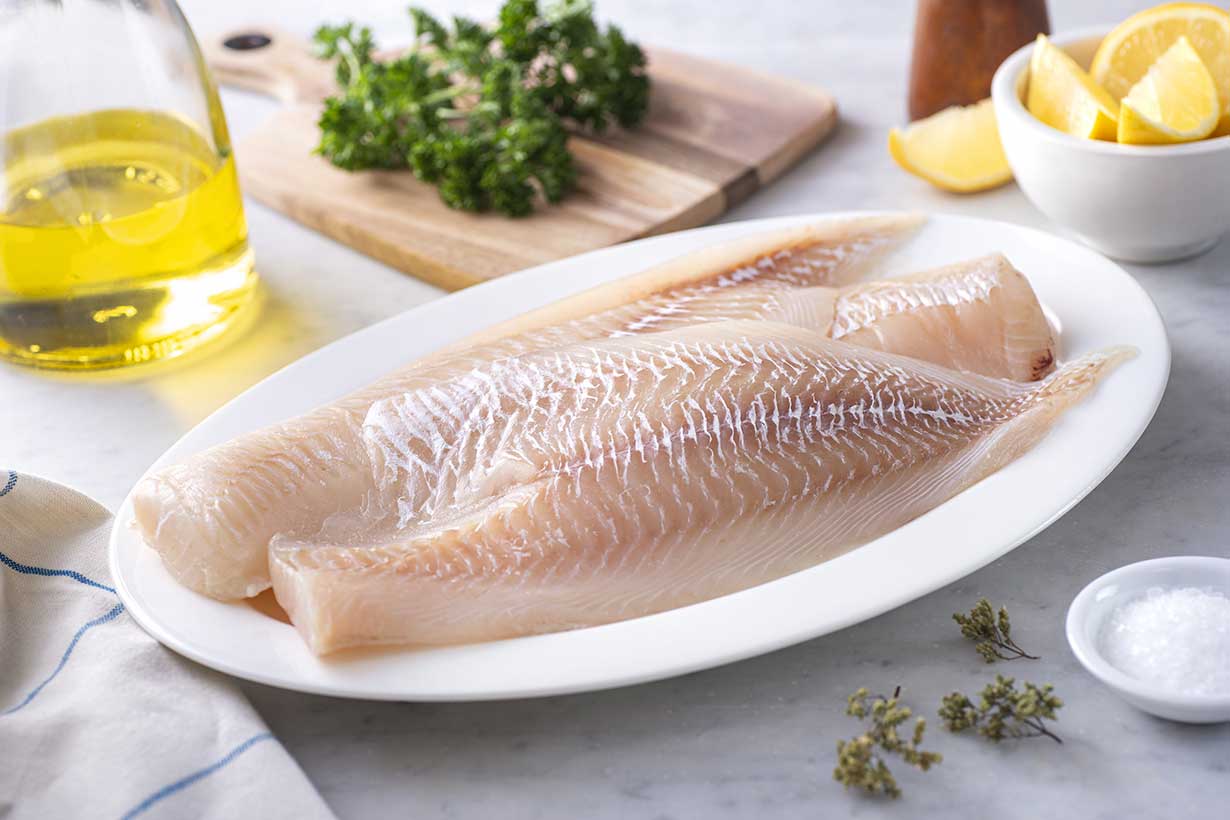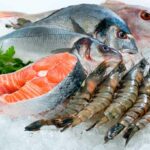Swai Fish (Basa): a Complete Nutritional Guide
Swai fish is frequently touted as a nutritious yet budget-friendly fish option.
However, there are sustainability and antibiotic concerns circulating around this popular seafood.
So, is swai fish a healthy choice?
This article offers a comprehensive nutritional guide to swai fish, delving into both its potential benefits and downsides.
What Is Swai Fish?

Swai fish, scientifically known as Pangasius hypophthalmus, is also recognized by names such as ‘basa’ or ‘Asian catfish.’
However, in the North American market, it is predominantly sold under the name ‘swai.’
Being a type of catfish, swai is characterized by its white flesh and relatively mild taste.
Indigenous to Southeast Asia, its primary farming and exporting nations are Thailand and Vietnam, particularly the latter. On this note, Vietnam’s swai fish exports totaled an approximate $1.8 billion US dollars in 2023 (1).
Commercial swai fish is exclusively an aquaculture product, and wild swai is not available for commercial sale (2).
Over the past decade, swai fish has gained increased popularity in international markets. This surge can be attributed to its consumer-friendly, mild taste, and its attractive price point.
Despite its taste and texture somewhat resembling cod, swai is notably more budget-friendly, making it a preferred choice for many.
The Nutritional Profile of Swai Fish
To help determine whether swai fish is worth considering, let’s explore its complete nutritional profile.
First and foremost, it’s worth noting that the USDA (United States Department of Agriculture) does not provide a nutritional data entry for swai fish.
Nonetheless, a study published in 2016 scrutinized the nutritional profile of 10 swai fish samples and formulated average nutritional values. These values are per 100 grams for skinless swai fish cutlets as sold (raw) (3).
All % Daily Values have been computed using this nutritional data alongside the FDA’s recommended daily values, which are based on a 2000-calorie diet (4).Name Amount % Daily Value Calories 98 kcal Carbohydrates 0 g 0% Fiber 0 g 0% Sugars 0 g Fat 2.4 g 3.1% Saturated 1.02 g 5.1% Monounsaturated 0.93 g Polyunsaturated 0.28 g Omega-3 0.03 g Omega-6 0.25 g Protein 17.8 g 35.6% Cholesterol – –
Vitamins
Regrettably, this study did not explore the vitamin content of swai fish.
However, like all fish, we know that swai fish will offer a high source of vitamin B12 and other B vitamins (5).
Minerals
100 grams of uncooked swai fish, as sold, provides the following mineral content.Mineral Amount % Daily Value Calcium 18.4 mg 1.4% Magnesium 24.9 mg 5.9% Potassium 300.3 mg 6.4% Selenium 15.0 mcg 27.3% Sodium 32.2 mg 1.4% Zinc 0.47 mg 4.3%
Main Nutritional Benefits
Here is a brief overview of the primary nutritional benefits that swai fish boasts:
- High protein content: With 17.8 grams of protein per 100 grams, swai fish is a protein-rich food choice.
- A good source selenium: With 15 mcg of selenium per 100 grams, swai fish provides 27.3% of the daily value for this essential mineral. Selenium, with its antioxidant properties, plays a vital role in the immune system and protects cells against oxidative damage (6, 7, 8).
- Low in calories: As many individuals aim to reduce their overall calorie intake, swai fish becomes an excellent option. Additionally, for those seeking to boost protein intake without adding excessive calories, swai fish fits the bill with only 98 calories per 100 grams.
Potential Downsides
Now that we’ve explored the primary nutritional benefits of swai fish, let’s delve into some of its potential drawbacks.
These encompass its mercury content, sustainability concerns, and farming practices.
What Is the Mercury Content of Swai Fish?
A 2018 study investigated the mercury content of commercial swai fish samples. A total of 80 samples from Vietnam were analyzed, procured from three different supermarkets (9).
The mean mercury content across these samples was 0.22 mg per kilogram. However, the individual samples displayed a range from from 0.10 mg/kg to 0.69 mg/kg.
In the United States, the FDA has set an ‘action level’ for mercury in seafood at 1mg/kg, representing the maximum allowable mercury content (10).
Within the European Union (EU), there is a maximum permitted mercury concentration in fish of 0.5 mg per kilogram (11).
Considering these mercury regulations, we can see that swai fish may occasionally meet or even exceed the EU regulatory limits.
In comparison, based on the FDA’s mercury monitoring program, other similar-tasting commercial fish exhibit much lower mercury concentrations (12). For example, cod had a mean mercury concentration of 0.1 mg based on 115 samples. Additionally, haddock had a mean mercury content of 0.06 mg based on 84 samples.
With a mean mercury content of 0.22 mg per kilogram, swai fish displayed double the mercury concentrations of cod and nearly quadruple that of haddock.
Sustainability Concerns
Not all swai fish are farmed equally, as indicated by advice from seafood sustainability experts:
- Monterey Bay Acquarium’s Seafood Watch advise against swai fish farmed in Vietnam, unless it is eco-certified. Their ‘avoid’ rating is based on unavailable data on chemical use but with evidence indicating its “very high” use, including antibiotics of importance to human health (13).
- Seafood Watch gives a ‘buy’ rating to swai fish certified as sustainable by either the Global Aquaculture Alliance, Aquaculture Stewardship Council, or Naturland, (14, 15, 16).
Antibiotic Usage Concerns
As touched on in the sustainability section, some Southeast Asian aquaculture farms extensively use antibiotics.
In this context, studies examining antibiotic usage in swai fish farming have noted that some farmers use antibiotics “as a preventative measure,” even in the absence of clinical symptoms of disease or infection (17).
Some issues with antibiotic use in aquaculture include:
- Residual antibiotics in food: People can be exposed to low levels of these antibiotics through their diet. This exposure could potentially lead to antibiotic resistance, rendering certain medical antibiotics ineffective (18).
- Wider antibiotic resistance: The overuse of antibiotics can potentially lead to antibiotic resistance in animal farming and the environment, ultimately impacting humans (19).
- Environmental concerns: Antibiotics used in aquaculture can pollute the surrounding environment and enter local water systems. These drugs may not completely break down for long periods, allowing for the buildup of antibiotics in the environment (20, 21).
Not a Good Source of Omega-3
While not as concerning as some other potential downsides of swai fish, this fish variety has a low omega-3 content.
Swai fish does provide a good source of protein and has a reasonable vitamin and mineral content. However, for those seeking seafood specifically for omega-3 fatty acids and their associated benefits, swai fish offers little, with an omega-3 content of only 0.03 g per 100 grams (3).
How Does Swai Fish Compare to Other Fish Choices?
Let’s now take a brief look at how swai fish compares to other popular types of fish.
In terms of its protein, vitamin, and mineral content, swai fish is likely fairly similar to other lean fish such as haddock and cod.
However, it is a poor source of omega-3 fatty acids. Therefore, if someone desires fish that offers a good omega-3 profile, this list of oily fish provides superior options.
On the positive side, swai fish typically retails for a lower price than white-fleshed fish like cod and haddock. If saving a bit of money is a priority, as it is for many of us, then this may understandably be an advantage.
That said, unless buying certified sustainable swai fish, there are concerns over its potential antibiotic content, environmental impact, and sustainability.
Swai fish can also be somewhat high in mercury, and some people may prefer lower-mercury options. On this note, many of the smaller oily fish, such as anchovies, sardines, and sprats, are excellent low-mercury choices.
How To Cook
Like other lean white fish, most people tend to cook swai fish by baking, grilling, or pan-frying.
However, it can also be steamed or breaded and then fried, depending on individual preferences.
Here are the three most popular ways to cook skinless swai fish fillets:
- Baking: Preheat the oven to 200°C (392°F), place the swai fillets into a baking tray, brush them with some olive oil, and sprinkle some salt on top. Once the oven reaches the required temperature, put the swai fish in and bake for approximately 20 minutes. Ensure the fish is fully cooked before eating.
- Grilling: Turn the grill on to a medium-high heat. Brush the swai fillets with olive oil, a bit of salt, and chosen seasonings. Then grill the fish on each side until it is thoroughly cooked.
- Pan-frying: Add olive oil to a pan and heat it up. Meanwhile, brush the swai fillets with some olive oil and seasonings of choice. Once the pan is hot, place the fillets in the center and cook each side for around three minutes or until fully cooked.
Adding the olive oil in these cooking methods is not essential, but swai fish is very lean and can easily become overly dry during the cooking process.
Final Thoughts
Overall, swai fish is a relatively affordable fish that provides an excellent source of protein, vitamins, and minerals.
However, slightly more expensive fish like haddock offer similar nutritional properties without the potential antibiotic and sustainability concerns.







